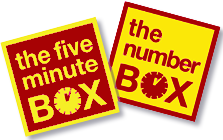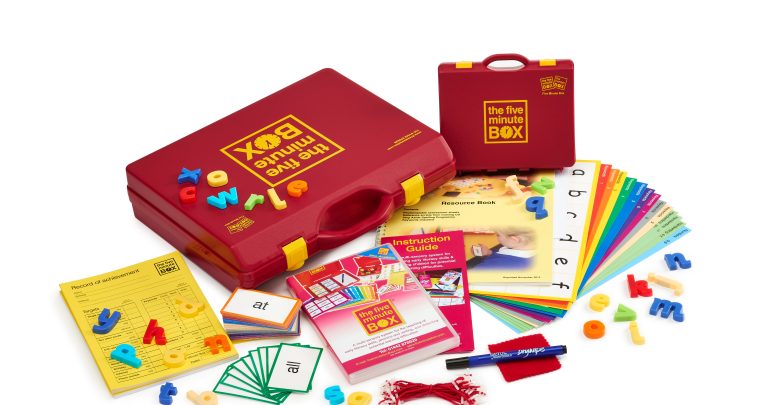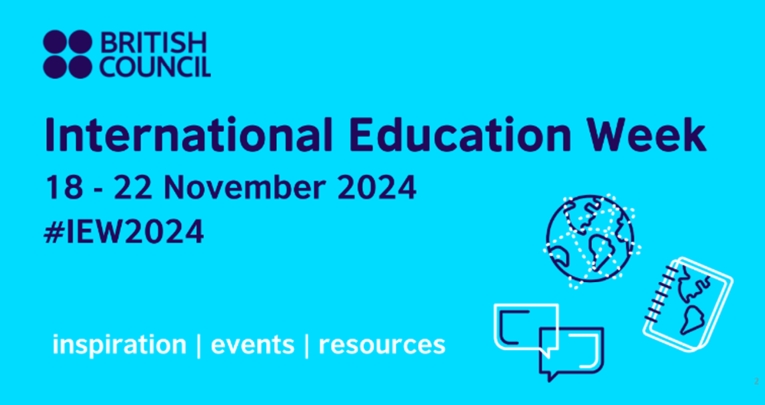Reviewed by John Dabell
The Five Minute Box is a very manageable system for helping children get started along the road towards literacy, and particularly for enabling the early identification of potential specific learning difficulties. It is entirely multi- sensory, following a ‘hear it, see it, say it, write it’ approach for sounds, irregular keywords and generalised spelling. It gives children an opportunity to learn with confidence and enthusiasm; it also helps prevent those who struggle from being at the back of the line, tailing off and always having to play catch-up.
The Five Minute Box is actually a little red suitcase which contains everything you need for every lesson – and rather reassuringly it is a million miles away from targets, testing and death by worksheet. It’s perfect for one-on-one support to ensure that no one slips through the net and can be used with all children for just a few minutes daily, covering the basic skills needed for the acquisition of literacy.
What’s in the box? Well, it contains a surprising amount of resources for something not much bigger than an A4 piece of paper. You get a demonstration CD, a resource book, a mini-box with plastic letters of the alphabet, a sounds board, nine keyword boards, nine sets of keyword cards, three handwriting formation boards, a number formation board, whiteboard and pen. You’ll also find 20 Record of Achievement booklets, 40 Record of Work sheets and an instruction guide. All this for 5p shy of £100, which I think represents good value.
Simple sense The Five Minute Box is a one-to-one resource, but very much for ‘in-house’ teaching. Gone are the days, I hope, where struggling children are ‘withdrawn’ from the class for a weekly catch-up lesson. With this kit, pupils stay with their classmates and learn alongside them for five minutes at a time; it’s part of classroom provision. It is also very easy to use.
You don’t need to be a specialist multi-sensory teacher to get the most out of the Five Minute Box and in fact, it’s ideal for support staff. As the system is progressive, there is no need to provide daily planning. There is no photocopying and no real preparation time required, although watching the 20-minute demonstration CD with its practical training videos is a must. The resource book includes key points to remember, baseline screening, a step aside spelling programme, spelling lists and a keywords check list. There are also a few teaching scripts (although more would have been great).
Probably the most valuable resource in the box from a teaching point of view is the little instruction guide, as this covers the essential elements that should be covered in every session – i.e. phonics, keywords and personal and sequential knowledge. You will probably want to photocopy and laminate this a few times over so that it is to hand for all staff using the box.
You might think that this resource is aimed at early years and KS1 – and you’d be right, but it could be just as effectively used with KS2 and even secondary students. It is certainly just the job for EAL learners of all ages. The message behind the box is that we don’t have to wait for children to fail before intervening in their learning. The Five Minute Box gets in there early, giving learners the responsibility for their own learning, as motivation, organisation and self-help strategies are built into the programme.
I have used the Five Minute Box effectively and with great success over many years to identify children needing help to acquire literacy skills, including those with dyslexia. Not once has it let me or the children down. Youngsters readily engage with the box, and I’m always amazed at how excited they get when they can carry it around and open it up themselves. In fact – living out of a suitcase has never been so enjoyable.
VERDICT: Box of delights If you’re searching for an early literacy teaching system and screening tool I can think of few resources to match the Five Minute Box; its simplicity is in many ways what makes it great.








